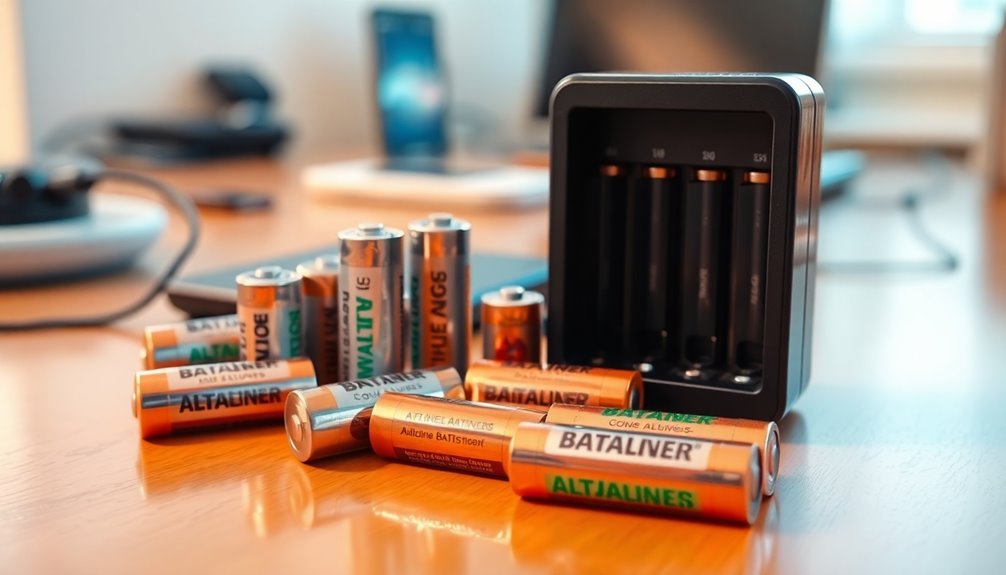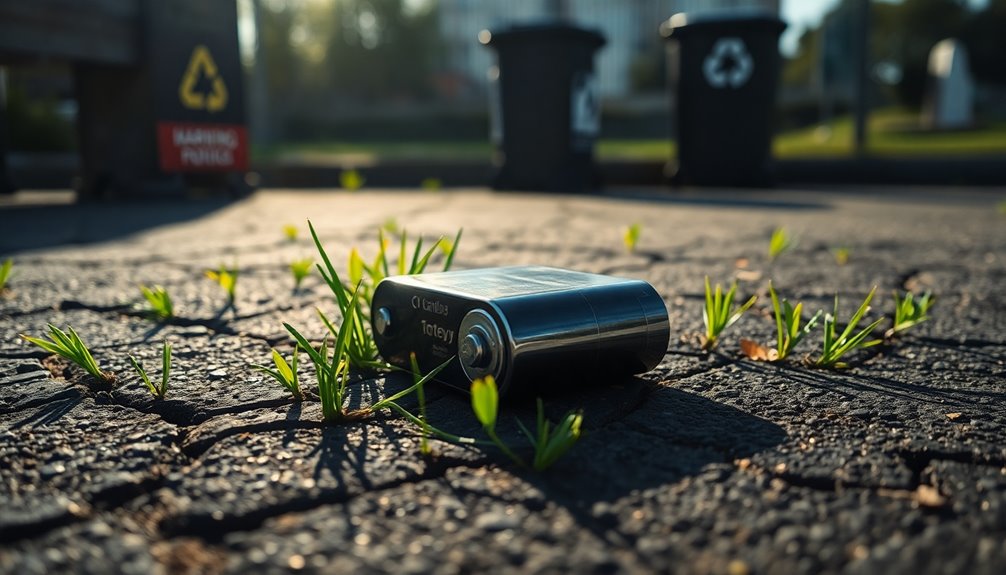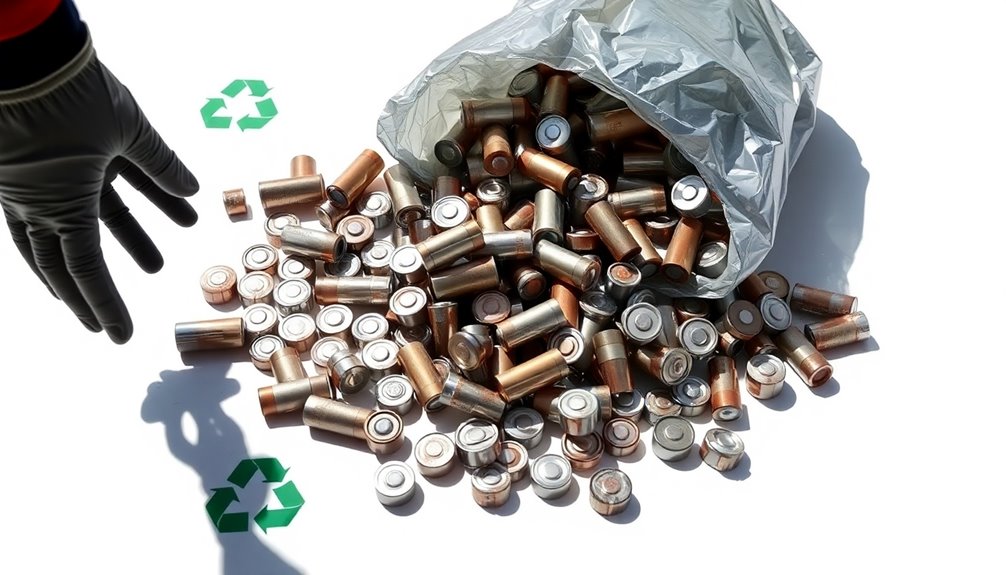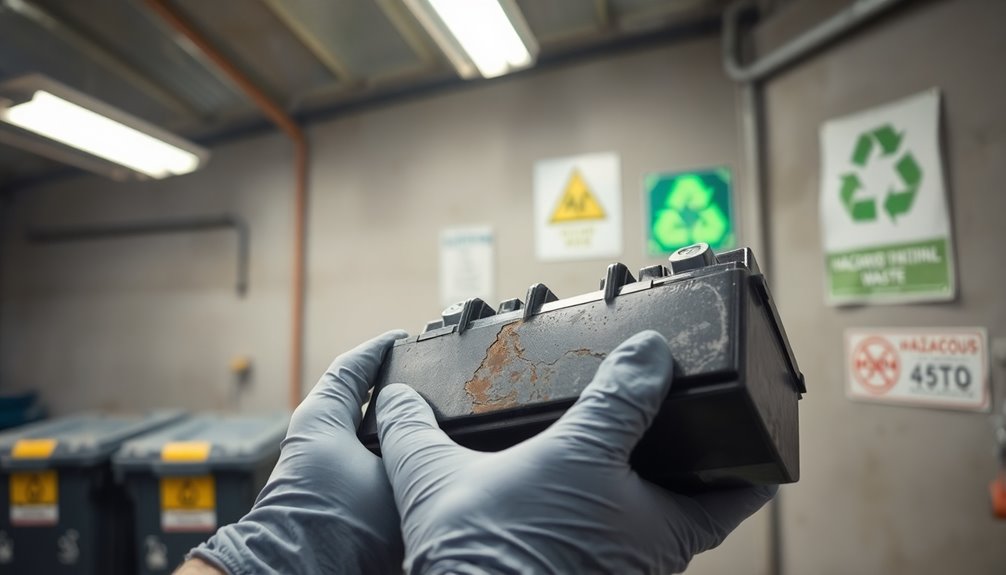Alkaline batteries aren't rechargeable, and trying to charge them can lead to gas production and leakage, which are serious safety hazards. Many people mistakenly believe that all batteries can be recharged or that they must be fully discharged first. In reality, alkaline batteries are not designed for this purpose, and the risks far outweigh any potential benefits. While there are rechargeable options like NiMH batteries that last longer and are safer, conventional alkaline batteries simply shouldn't be charged. For more insights on battery types and how to choose the right one, keep exploring.
Key Takeaways
- Alkaline batteries are not designed for recharging; doing so can lead to gas production, leakage, and safety hazards.
- Rechargeable alkaline batteries (RAM) have limited cycles and higher risks compared to more efficient options like NiMH batteries.
- NiMH batteries offer up to 500 recharge cycles and are safer, making them a better choice for frequent use.
- Overcharging alkaline batteries is dangerous and can cause explosions, while modern rechargeable batteries have safeguards against this risk.
- Proper disposal of alkaline batteries is crucial due to their toxic materials, highlighting the environmental benefits of using rechargeable batteries.
Understanding Alkaline Batteries
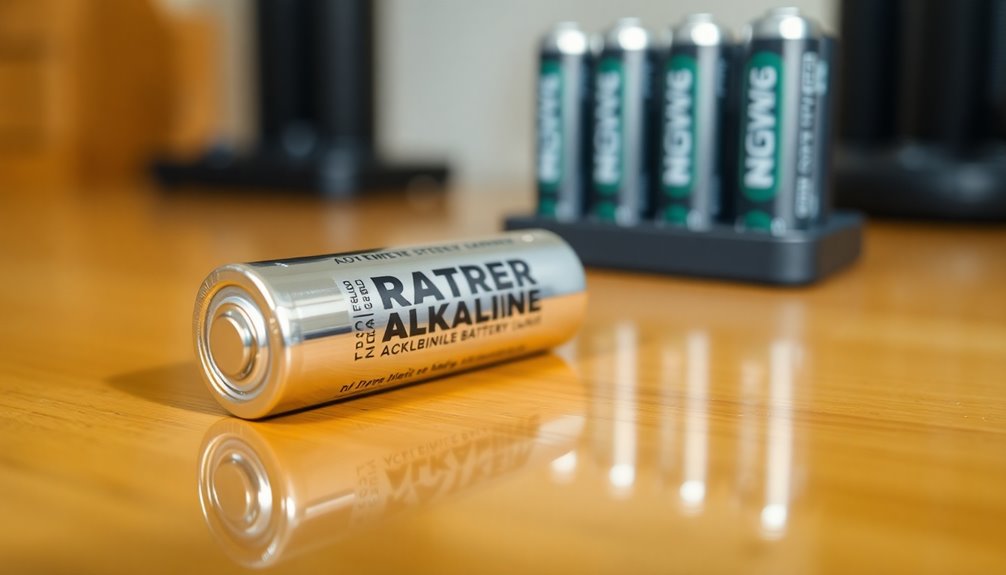
Alkaline batteries are essential power sources commonly found in household devices. They typically operate at a voltage of 1.5 volts and boast a capacity of over 2,500 mAh, making them reliable for everyday use.
While some rechargeable batteries, including rechargeable alkaline manganese (RAM) varieties, exist, they aren't designed for extensive recharging. In fact, recharging standard alkaline batteries can lead to gas production and leakage, posing risks like high pressure that could cause explosions.
Although RAM batteries offer a more sustainable option with a slower self-discharge rate, they provide fewer recharge cycles compared to nickel-based rechargeable batteries like NiMH.
Always prioritize proper recycling methods, as improper disposal of alkaline batteries can harm the environment due to their toxic materials.
The Rechargeability Debate

You might think rechargeable alkaline batteries are a great option, but there are significant risks involved in charging them.
From gas production to potential leakage, these issues can make recharging not just inconvenient, but also hazardous.
Plus, with rechargeable options like NiMH batteries offering better performance and cost-effectiveness, it's worth considering your choices carefully.
Rechargeable Alkaline Battery Overview
The debate over rechargeable alkaline batteries often centers on their safety and performance. While traditional alkaline batteries aren't designed for recharging, you may have heard of rechargeable alkaline manganese (RAM) batteries, which offer a safer alternative. However, RAMs come with higher costs and generally underperform compared to standard rechargeable batteries like NiMH.
| Feature | Rechargeable Alkaline |
|---|---|
| Cost per Cycle | ~$1.45 |
| Performance in High-Drain | Lower than NiMH |
| Environmental Impact | Moderate |
| Manufacturer Availability | Decreasing |
Though RAM batteries provide some benefits, many manufacturers have phased them out due to the superior efficiency of other rechargeable battery options.
Risks of Charging Alkalines
While many might consider recharging alkaline batteries as a simple way to save money, the reality is that doing so can lead to serious safety risks.
The recharging process can cause high pressure build-up inside the battery, increasing the chances of failure or rupture. This can result in hazardous materials, like potassium hydroxide, leaking out, posing a risk to you and the environment.
Standard alkaline batteries weren't designed for recharging, and attempts to do so can lead to dangerous gas production and potential explosions.
Although rechargeable alkaline manganese (RAM) batteries were introduced as safer alternatives, they've largely been phased out.
Ultimately, the risks of recharging traditional alkalines outweigh any potential savings, so it's best to use proper rechargeable technologies instead.
Myths About Battery Charging

You might think that you need to fully discharge your batteries before recharging, but that's a misconception with modern batteries.
Lithium-ion and NiMH types can handle charging at any time without losing capacity.
Plus, overcharging isn't a major concern anymore, thanks to built-in safeguards and smart chargers.
Common Charging Misconceptions
Many people still cling to outdated beliefs about battery charging, particularly when it comes to lithium-ion and alkaline batteries.
One common misconception is that all rechargeable batteries must be fully drained before recharging. This is a holdover from nickel-cadmium batteries, which indeed required complete discharge.
Modern lithium-ion and lithium-polymer batteries, however, can be charged at any time without significant capacity loss.
Another myth is that alkaline batteries are a reliable option for recharging. While it's technically possible, it's not cost-effective, and risks like leakage or explosion exist.
Rechargeable alkaline manganese (RAM) batteries were once introduced to address these concerns but have mostly been replaced by more efficient options like NiMH batteries.
It's crucial to understand these distinctions for safer, more effective battery use.
Modern Battery Discharge Needs
Although some still believe batteries must be fully discharged before recharging, modern technology has made this practice obsolete. With advancements in battery design, both lithium and Nickel Metal Hydride (NiMH) batteries allow for convenient charging at any time. Unlike older alkaline batteries, modern battery discharge needs have evolved, reducing the need for complete drains.
| Battery Type | Full Discharge Required? | Best Charging Practice |
|---|---|---|
| Alkaline Battery | Yes | Not rechargeable |
| Nickel Metal Hydride | No | Charge when convenient |
| Lithium-ion | No | Charge whenever possible |
| Lithium-polymer | No | Regular charging recommended |
Charging regularly helps prolong battery lifespan and guarantees peak performance. Embrace modern battery technology for hassle-free usage! Additionally, understanding testing methodologies can enhance your knowledge of how devices like batteries are evaluated for efficiency.
Overcharging Risks Explained
There's a common misconception that overcharging batteries is a significant risk, but that's not the case with modern rechargeable technologies.
Modern rechargeable batteries, like lithium-ion and NiMH, have built-in safeguards that prevent overcharging, especially when you use compatible battery chargers. These smart chargers automatically shut off once your battery is fully charged, preserving its health and longevity.
While older battery technologies didn't offer these protections, today's designs make overcharging a minimal concern. Continuous overcharging can still shorten battery lifespan, but the safety features in modern batteries largely mitigate this risk.
Just remember, understanding each battery type's specific charging requirements is crucial to guarantee peak performance and avoid issues with less advanced technologies.
Safe Storage Practices

Proper storage practices can greatly extend the life of your alkaline batteries. To optimize their shelf life, keep them in a cool, dry location away from extreme temperatures. Avoid storing them in the refrigerator, as moisture can harm performance. Instead, store your alkaline batteries at room temperature, ideally below 100°F, since high heat can reduce capacity by up to 25%.
| Temperature | Ideal Condition | Avoid |
|---|---|---|
| 32°F to 77°F | Room Temperature | Extreme Heat |
| Below 40% charge | Rechargeables only | Full Charge for Alkaline |
| Dry, dark location | Safe Storage | Direct Sunlight |
Overcharging: Risks and Realities
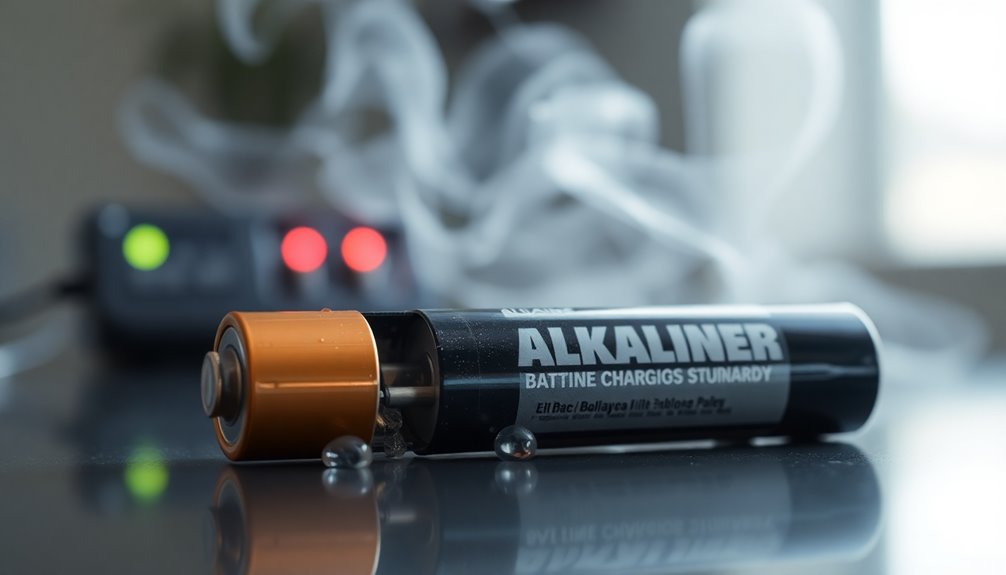
Storing batteries correctly is just one part of ensuring their longevity and safety.
When it comes to overcharging, alkaline batteries pose significant risks. Unlike modern rechargeable batteries, which have built-in safeguards, alkaline batteries can't handle overcharging. This can lead to gas production, high pressure, leakage, or even explosions, making it unsafe to recharge them.
While you might think recharging could be economical, the dangers far outweigh any potential benefits. Always use chargers designed specifically for rechargeable batteries, as they include failsafes to prevent overheating and overcharging.
Remember, if you want to maintain battery performance and safety, avoid leaving any battery on the charger overnight and monitor charge levels closely.
Prioritize safety to avoid unnecessary hazards.
Comparing Rechargeable Options
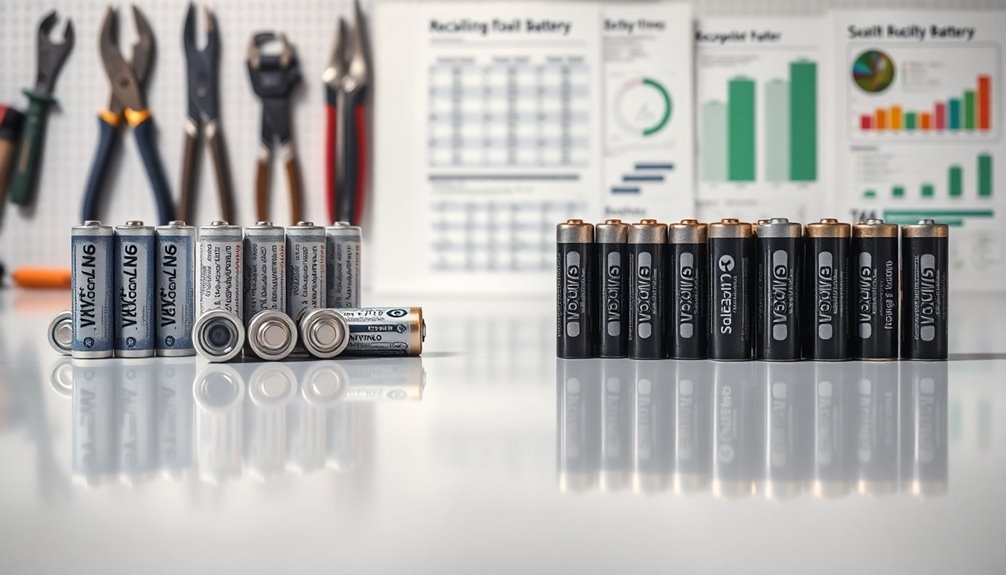
When considering which batteries to use, how do rechargeable options stack up against traditional alkaline ones?
Rechargeable options, particularly NiMH batteries, offer significant advantages. They typically last 3-4 times longer than alkaline batteries in high-drain devices like digital cameras, making them more efficient for frequent use.
Plus, NiMH batteries can handle up to 500 recharge cycles, while alkaline batteries are generally single-use. Hybrid or Precharged NiMH batteries enhance convenience with lower self-discharge rates, arriving ready to use.
Although rechargeable alkaline manganese (RAM) batteries exist, they're less cost-effective—around $1.45 per cycle compared to just 0.18 cents for NiMH.
With many manufacturers phasing out RAM batteries, it's clear that modern rechargeable options are a smarter choice. Additionally, using energy-efficient operation can help reduce overall electricity costs when utilizing rechargeable batteries.
Environmental Considerations

Choosing the right battery also involves understanding their environmental impact. While rechargeable alkaline manganese (RAM) batteries may seem eco-friendly, their production and disposal raise significant environmental considerations.
Unfortunately, most manufacturers have phased out RAM batteries, limiting your sustainable options. Traditional alkaline batteries contain toxic materials like zinc and manganese, which can harm the environment if not recycled properly. It's essential to dispose of them responsibly.
Fortunately, free recycling schemes exist to help mitigate this impact. Additionally, strategic withdrawal timing can optimize your environmental contributions, just as it can with financial planning for retirement. Remember, the long-term sustainability of rechargeable batteries lies in their lower waste and reduced resource consumption. By using and disposing of them correctly, you can contribute to a healthier planet while enjoying reliable power sources.
Cost Analysis of Battery Types

When it comes to battery costs, you'll find that rechargeable options can save you money over time.
While alkaline batteries might seem cheaper upfront, their per-cycle costs add up quickly.
Understanding the long-term financial benefits of rechargeable batteries could help you make a smarter choice for your wallet.
Rechargeable vs. Disposable Costs
Although many people still rely on alkaline batteries for their devices, it's important to understand the long-term costs associated with their use. The cost per cycle for disposable batteries ranges from $0.75 to $1.25, which adds up quickly.
In contrast, rechargeable alkaline batteries offer a much lower cost per cycle of about 1.5 to 2.5 cents. If you want to save even more, consider Nickel Metal Hydride (NiMH) batteries, which cost only about 0.18 cents per cycle.
Hybrid or Precharged batteries also provide a good option at around 0.60 cents per cycle. By choosing rechargeable options, you're not just reducing waste; you're making a financially savvy decision that pays off over time.
Long-Term Financial Benefits
Making the switch to rechargeable batteries not only cuts down on waste but also brings significant long-term financial benefits.
When you consider the costs, rechargeable alkaline batteries range from 1.5 to 2.5 cents per cycle, while standard alkaline batteries can cost you $0.75 to $1.25 each use. NiMH batteries are even more economical at just 0.18 cents per cycle.
Here are some key points to keep in mind:
- Rechargeable batteries can be recharged up to 500 times.
- The initial investment in chargers and batteries pays off over time.
- Hybrid batteries offer a balance at about 0.60 cents per cycle.
Common Misconceptions Explained

Many people believe that alkaline batteries can be easily recharged like their rechargeable counterparts, but this is a misconception that can lead to frustration and safety risks.
While it's technically possible to recharge AA alkaline batteries, the process isn't cost-effective and can result in gas production or leakage.
Rechargeable alkaline manganese (RAM) batteries were introduced as a safer option, but many manufacturers have phased them out.
In comparison, NiMH batteries last 3-4 times longer in high-drain devices, making them a better choice.
Although alkaline batteries may seem environmentally friendly, improper disposal can cause contamination, underscoring the need for responsible recycling and usage.
Understanding these misconceptions helps you make informed decisions about battery use and sustainability.
Best Practices for Battery Use
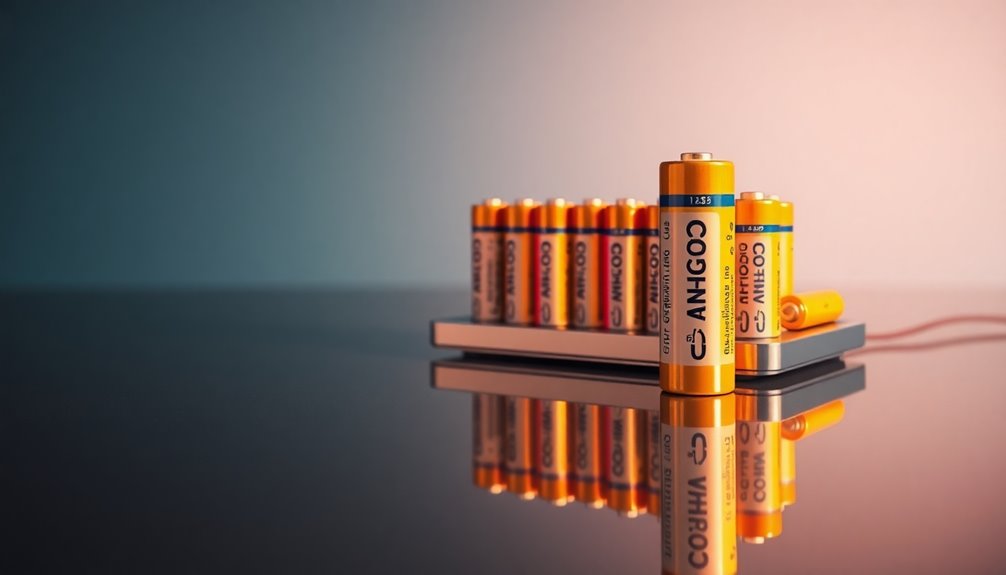
Understanding the myths surrounding alkaline batteries sets the stage for adopting better battery practices.
To optimize your battery use, consider these tips:
- It's best to store lithium-based and nickel-based rechargeable batteries at approximately 40-50% charge to prevent lower capacity over time.
- Charge lithium batteries when convenient, as they handle partial discharges well, ensuring longer life.
- Always use chargers designed for the specific types of batteries you have, as this prevents safety issues like overcharging.
Frequently Asked Questions
Can You Really Recharge Alkaline Batteries?
You might wonder if you can really recharge alkaline batteries. Technically, it's possible, but it's not a good idea.
Recharging them can lead to gas production, leakage, or even explosions. While rechargeable alkaline batteries exist, they aren't as cost-effective or efficient as other options like NiMH batteries.
It's safer and smarter to stick with rechargeable batteries designed for repeated use, ensuring both your safety and better performance.
Why Alkaline Batteries Are Not Rechargeable?
Alkaline batteries aren't rechargeable mainly because they lack the necessary chemical composition to handle recharging effectively.
When you try to recharge them, you risk gas buildup, leakage, and even explosions.
Plus, they don't have built-in safeguards like dedicated rechargeable batteries do, which makes overcharging a real concern.
In the long run, you'll find that it's more cost-effective and safer to use rechargeable batteries designed for multiple cycles.
Are Rechargeable Alkaline Batteries Any Good?
You might wonder if rechargeable alkaline batteries are worth it. They can seem appealing with their higher voltage and slow self-discharge, but here's the catch: they don't quite match the performance of other rechargeable options like NiMH batteries.
You'll find that NiMH can last much longer in high-drain devices and cost less per cycle.
What Is the Problem With Alkaline Batteries?
The problem with alkaline batteries lies in their inefficiency and environmental impact.
They're designed for single-use, which means you're constantly buying new ones, leading to waste.
When it comes to performance, they can't keep up with rechargeable options like NiMH batteries.
Plus, if you try to recharge them, you risk leaks and gas buildup.
Conclusion
So, if you've been dreaming of turning your old alkaline batteries into a never-ending power source, it's time to wake up! While they might not be the eco-friendly superheroes you hoped for, embracing rechargeable batteries is like inviting a reliable friend to your energy party. Say goodbye to the myth of the "forever battery" and hello to smarter choices. After all, who needs a science experiment gone wrong in their drawer when you can have a dependable power solution?

